Thingiverse
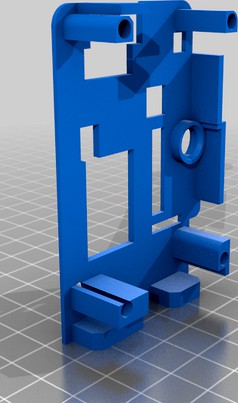
NodeMCU 12E extention prototyping kit shell by victorzzt
by Thingiverse
Last crawled date: 3 years, 3 months ago
For the shell, please attribute to https://makerfairehongkong.com/2018/ ,it was designed for expanding the connector using Servo style, giving it separate 5V power (to address the diode burn when drawing 5V from the NodeMCU board). Thanks to Dr. Clifford Choy from The Hongkong Polytechnic University for the support of the development.
A brief description is here: https://wiki.melissakronenberger.com/bin/view/Main/Past%20works/ESP8266%20Docking%20Board/
In order to use this, you will need to also fabricate the extension board for NodeMCU-12E from here: https://bitbucket.org/victorzzt/nodemcu-v3-docking-board/src/master/release/
How to solder is in dockingReadme.pdf
BOM is attached in excel, but links for purchase might be outdated.
The one with ACPWM is an example how you can expand the shell to include something else.
Unfortunately I just moved so I do not have a ready made one, and I currently do not have the means to fabricate anything. May upload one if I make one in the future.
Future work:
It seems to be in the United states, ESP32 is not that much more expensive than ESP8266 boards. So for small scale prototyping, judging by the functionality/cost difference, it makes more sense just to use ESP32 based system.
Possible directions: extention board using ESP32 module / extention board using ESP32 Dev-Kit. As ESP32 based Dev-kit has too many varients, I will probably pick the one which is most used.
ESP32 is slightly larger than ESP8266 (except for HUZZAH like build that sacrifice some of the IO pins) so it will be challenging for the form-factor.
Servo like connectors might not be a desired feature, need to find a more customizable arrangement. Also in the current system, only external supply will be able to power the servo connector's 5V power lane, a more flexible power which allow USB power but can protect from the diode from burning will be preferred. A self-latch-power button circuit with soft-power-off function can be integrated.
A brief description is here: https://wiki.melissakronenberger.com/bin/view/Main/Past%20works/ESP8266%20Docking%20Board/
In order to use this, you will need to also fabricate the extension board for NodeMCU-12E from here: https://bitbucket.org/victorzzt/nodemcu-v3-docking-board/src/master/release/
How to solder is in dockingReadme.pdf
BOM is attached in excel, but links for purchase might be outdated.
The one with ACPWM is an example how you can expand the shell to include something else.
Unfortunately I just moved so I do not have a ready made one, and I currently do not have the means to fabricate anything. May upload one if I make one in the future.
Future work:
It seems to be in the United states, ESP32 is not that much more expensive than ESP8266 boards. So for small scale prototyping, judging by the functionality/cost difference, it makes more sense just to use ESP32 based system.
Possible directions: extention board using ESP32 module / extention board using ESP32 Dev-Kit. As ESP32 based Dev-kit has too many varients, I will probably pick the one which is most used.
ESP32 is slightly larger than ESP8266 (except for HUZZAH like build that sacrifice some of the IO pins) so it will be challenging for the form-factor.
Servo like connectors might not be a desired feature, need to find a more customizable arrangement. Also in the current system, only external supply will be able to power the servo connector's 5V power lane, a more flexible power which allow USB power but can protect from the diode from burning will be preferred. A self-latch-power button circuit with soft-power-off function can be integrated.
Similar models
grabcad
free

NodeMCU 12E extention prototyping kit shell
... from the diode from burning will be preferred. a self-latch-power button circuit with soft-power-off function can be integrated.
thingiverse
free

Wifi web interface for 3D printer on ESP8266 12E dev kit by Janruda
...wifi web interface for 3d printer on esp8266 12e dev kit by janruda
thingiverse
box for esp8266 12e dev kit.
grabcad
free

Nodemcu ESP8266 ESP-12E
...nodemcu esp8266 esp-12e
grabcad
nodemcu esp8266 esp-12e
grabcad
free

NodeMcu V3 ESP8266 ESP-12E Development Board Lolin
...oard lolin
pins are 0.1" (2.54mm) pitch with a 1.1" (27.94mm) wide footprint
remake from marcell stoer added pin labels
thingiverse
free

Box for ESP8266, ESP-12E WiFi Module NodeMcu by MartinDubois
...box for esp8266, esp-12e wifi module nodemcu by martindubois
thingiverse
box for esp8266, esp-12e wifi module nodemcu
thingiverse
free

NodeMCU (ESP8266) Proto Board Enclosure by anistor
....html and additional electronics.
please be aware that the top is very tight when attaching to the base (it was done on purpose).
thingiverse
free

Pet Feeder by OhNooMrBill
...rpm- $12lua esp8266 esp-12e wifi dev board- $8wifi motor drive shield for nodemcu- $5
12v power supply ( i had one laying around)
thingiverse
free

NodeMcu Lua ESP8266 ESP-12E Top Case by FunFlyFPV
...nodemcu lua esp8266 esp-12e top case by funflyfpv
thingiverse
top case for the nodemcu lua esp8266 esp-12e with button holes.
thingiverse
free

NodeMCU ESP8266 ESP-12F/ESP-12E case by succoria
...nodemcu esp8266 esp-12f/esp-12e case by succoria
thingiverse
esp8266 12f/12e case
grabcad
free

ESP32 Dev Kit V1
...-32s wifi development board nodemcu esp-wroom-32 microcontroller 2.4ghz dual-core wifi bluetooth processor integrated chip cp2102
Victorzzt
thingiverse
free

Simple Solid Tire by victorzzt
...break down. so advice to change the params a small step at a time.
the example prints were with tpu (15mm/s, no retraction, 220c)
thingiverse
free

Simple USB Lampcase by victorzzt
...6110
usb ext tube: https://detail.tmall.com/item.htm?spm=a230r.1.14.55.2cab40be5maaxj&id=41286248566&ns=1&abbucket=15
thingiverse
free

Woodwork Hole Saw Wall mount by victorzzt
...e bottom is somehow the print broke at a point, instead of throwing the whole thing away and reprinting it, i just glued it back.
thingiverse
free

Parametric fresnel lens (Failed) by victorzzt
...ir gets in), if anyone have tried sla technology or other(eg. milling/lathing clear plastic) that works, please also let me know.
thingiverse
free

Miscellaneous Previous Design by victorzzt
... to other free tools and remake soon too, sucks to be poor :p) also thanks to hongkong maker faire and assist prof. clifford choy
grabcad
free

NodeMCU 12E extention prototyping kit shell
...also fabricate the extension board for nodemcu-12e from here: https://bitbucket.org/victorzztnodemcu-v3-docking-board/src/master/release/ how to solder is in dockingreadme.pdf bom is attached...
grabcad
free

Miscellaneous Previous Design
...intuitive to use), to fabricate the pcb, please goto: https://bitbucket.org/victorzztnodemcu-v3-docking-board/src/master/release/ ,source files is in eagle (might need to change...
12E
3dfindit
free

RGP02-12E
...rgp02-12e
3dfind.it
catalog: vishay by ultra librarian
3dfindit
free

RGP02-12E-E3
...rgp02-12e-e3
3dfind.it
catalog: vishay by ultra librarian
thingiverse
free

ESP8266-12E Programmer by ymbebhbbfb123
...bbfb123
thingiverse
esp8266-12e programmer holder.
i use diptrace for my circuit board designs, the pcb layout link is included.
thingiverse
free

NodeMCU ESP8266 ESP-12F/ESP-12E case by succoria
...nodemcu esp8266 esp-12f/esp-12e case by succoria
thingiverse
esp8266 12f/12e case
thingiverse
free

ESP-12E pogo pin programmer
...pogo pins and mounting a serial module to allow programming of a bare esp-12e module. probably works for esp-12f too. and others?
thingiverse
free

Box for ESP8266, ESP-12E WiFi Module NodeMcu by MartinDubois
...box for esp8266, esp-12e wifi module nodemcu by martindubois
thingiverse
box for esp8266, esp-12e wifi module nodemcu
thingiverse
free

NodeMcu Lua ESP8266 ESP-12E Top Case by FunFlyFPV
...nodemcu lua esp8266 esp-12e top case by funflyfpv
thingiverse
top case for the nodemcu lua esp8266 esp-12e with button holes.
thingiverse
free

Wifi web interface for 3D printer on ESP8266 12E dev kit by Janruda
...wifi web interface for 3d printer on esp8266 12e dev kit by janruda
thingiverse
box for esp8266 12e dev kit.
thingiverse
free

ESP8266 ESP-12E Case by xSnowHeadx
... to see both led.
especially for iot-applications the case should be as small as possible. this is the smallest possible one. ;-)
thingiverse
free

ESP-12E Snap Together Case NodeMCU by tbrinlee
...esp-12e snap together case nodemcu by tbrinlee
thingiverse
this was a quick snap together case.
Nodemcu
thingiverse
free

NodeMCU by Joesuzurg
...nodemcu by joesuzurg
thingiverse
nodemcu
thingiverse
free

Case for NodeMCU
...case for nodemcu
thingiverse
case for nodemcu (esp8266 wifi development board)
thingiverse
free

NodeMCU Box by ajcorrea
...nodemcu box by ajcorrea
thingiverse
box for nodemcu amica
thingiverse
free

NodeMCU Housing by burt777
...nodemcu housing by burt777
thingiverse
housing for nodemcu project.
thingiverse
free

NodeMCU v3 Case
...nodemcu v3 case
thingiverse
its a nodemcu v3 case
thingiverse
free

NodeMCU DHT22 Box
...nodemcu dht22 box
thingiverse
a simple box for a nodemcu and a dht22 on a perf board.
thingiverse
free

ESP32 NodeMCU case
...esp32 nodemcu case
thingiverse
a remix scaled up a bit to fit an esp32 nodemcu
thingiverse
free

NodeMCU holder by jscottb
...nodemcu holder by jscottb
thingiverse
a nodemcu holder that give access to the pins from the top.
thingiverse
free

NodeMCU with breadboard by ardhoadnan
...ase + breadboard
parts
nodemcu + breakout base
half-size 400 point breadboard
5mm screw for breakout base fasterner
happy coding!
thingiverse
free

BrewPiLess / NodeMcu Case by theju
...ess controller or nodemcu
use with a nodemcu base which fit in the case.
a small hole under the nodemcu is used to route wires.
Extention
turbosquid
$9

Extention Swich
... available on turbo squid, the world's leading provider of digital 3d models for visualization, films, television, and games.
3d_export
$100

Smurf package
...- papa smurf poligon : 50.885 vertices : 51.271 extention : - zbrush - obj - stl stl properties...
3d_export
$100

Sonic package
...: amy xmas poligon : 131.874 vertices : 133.009 extention : - zbrush - obj - stl stl properties...
3d_export
$35

Sylvester
...3dexport sylvester : poligon : 68.639 vertices : 68.702 extention : - zbrush - obj -...
3d_export
$35

Sonic
...3dexport sonic artistic poligon : 29.617 vertices : 29.806 extention : - zbrush - obj - stl stl properties...
3d_export
$10
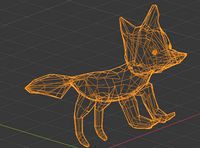
foxy
...with bones and animations ready to use, include stl extention ...
3d_export
$35
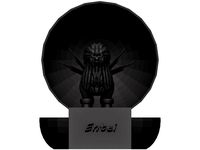
Entei
...3dexport entei : poly : 1.081.754 vertices : 1.083.564 extention : - zbrush - obj - stl...
3d_export
$35

Ivysaur
...3dexport ivysaur : poly : 62.349 vertices : 62.840 extention : - zbrush - obj - stl...
3d_export
$35
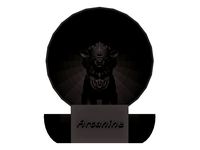
Arcanine
...arcanine 3dexport arcanine poly : 817.447 vertices : 817.816 extention : - zbrush - obj - stl...
3d_export
$35

Raticate
...3dexport raticate : poly : 769.607 vertices : 769.862 extention : - zbrush - obj - stl...
Shell
archibase_planet
free

Shell
...shell
archibase planet
sports shell playground
sports shell 1 - 3d model (*.gsm+*.3ds) for interior 3d visualization.
design_connected
$16
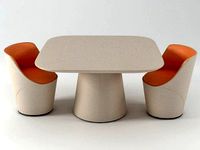
Shell
...shell
designconnected
fasem international shell armchairs computer generated 3d model. designed by roberto lazzeroni.
3ddd
$1

Shell Chair
...shell chair
3ddd
hans wegner , shell
shell chair
design_connected
$13

Shell
...shell
designconnected
fiam italia shell coffee tables computer generated 3d model. designed by danny lane.
3ddd
$1

Shell armchair
...shell armchair
3ddd
shell
shell armchair
designer don't remember
turbosquid
$1
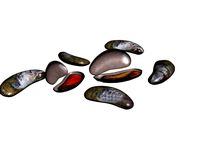
Shells
...
turbosquid
royalty free 3d model shells for download as max on turbosquid: 3d models for games, architecture, videos. (1449062)
turbosquid
$10

Shell
...quid
royalty free 3d model shell for download as stl and obj on turbosquid: 3d models for games, architecture, videos. (1583461)
turbosquid
free

Shells
...uid
free 3d model shells for download as blend, fbx, and obj on turbosquid: 3d models for games, architecture, videos. (1562122)
turbosquid
$49

Shell
...yalty free 3d model shell for download as blend, fbx, and obj on turbosquid: 3d models for games, architecture, videos. (1569496)
turbosquid
$1

Shell
...yalty free 3d model shell for download as blend, fbx, and obj on turbosquid: 3d models for games, architecture, videos. (1606504)
Prototyping
3ddd
$1
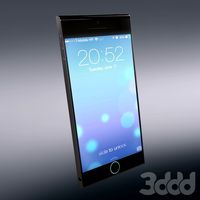
iphone (prototype)
...e (prototype)
3ddd
iphone prototype телефон сотовый прототип , iphone
iphone (prototype)
turbosquid
$60
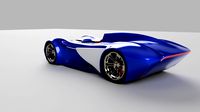
prototype
...y free 3d model prototype for download as , fbx, stl, and obj on turbosquid: 3d models for games, architecture, videos. (1516333)
turbosquid
free

prototype
... available on turbo squid, the world's leading provider of digital 3d models for visualization, films, television, and games.
turbosquid
free

Prototype Crossbow
...squid
free 3d model prototype crossbow for download as blend on turbosquid: 3d models for games, architecture, videos. (1237541)
turbosquid
$25

Atlas Prototype
... available on turbo squid, the world's leading provider of digital 3d models for visualization, films, television, and games.
turbosquid
$20

Prototype Airplane
... available on turbo squid, the world's leading provider of digital 3d models for visualization, films, television, and games.
3d_export
$10

starship prototype
...y manufactured in boca chica ,texas by spacex. this prototype consist features like forward flaps, bottom flaps and landing legs.
design_connected
$11
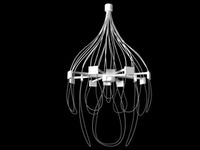
Jellyfish Chandelier (prototype)
...sakai design associate jellyfish chandelier (prototype) pendant lights computer generated 3d model. designed by toshihiko sakai.
turbosquid
free

Prototype Plasma Rifle
...d
free 3d model prototype plasma rifle for download as blend on turbosquid: 3d models for games, architecture, videos. (1237576)
turbosquid
$15

Prototype CNC Router
... model prototype cnc router for download as iam, ige, and stl on turbosquid: 3d models for games, architecture, videos. (1667298)
Kit
turbosquid
$3

Bathroom Kit Baño kit
... available on turbo squid, the world's leading provider of digital 3d models for visualization, films, television, and games.
turbosquid
$19
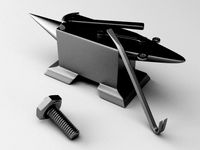
Kit
... available on turbo squid, the world's leading provider of digital 3d models for visualization, films, television, and games.
3d_export
$20
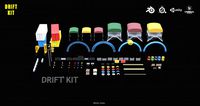
Drift Kit
...drift kit
3dexport
turbosquid
$40

BitCoin Kit
...urbosquid
royalty free 3d model bitcoin kit for download as on turbosquid: 3d models for games, architecture, videos. (1519068)
turbosquid
$9
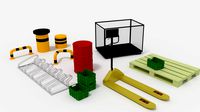
Industrial kit
...osquid
royalty free 3d model industrial kit for download as on turbosquid: 3d models for games, architecture, videos. (1144117)
turbosquid
$6

Kit Vases
...
turbosquid
royalty free 3d model kit vases for download as on turbosquid: 3d models for games, architecture, videos. (1285114)
turbosquid
free

Survival Kit
...rbosquid
royalty free 3d model survival kit for download as on turbosquid: 3d models for games, architecture, videos. (1637721)
turbosquid
$50
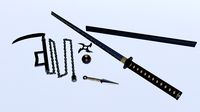
Ninja Kit
...rbosquid
royalty free 3d model ninja kit for download as fbx on turbosquid: 3d models for games, architecture, videos. (1672364)
turbosquid
$35
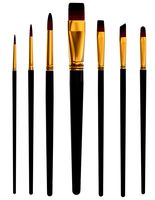
Brushes Kit
...osquid
royalty free 3d model brushes kit for download as max on turbosquid: 3d models for games, architecture, videos. (1216721)
turbosquid
$19
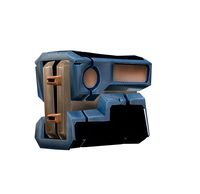
Medical kit
...osquid
royalty free 3d model medical kit for download as fbx on turbosquid: 3d models for games, architecture, videos. (1486089)
